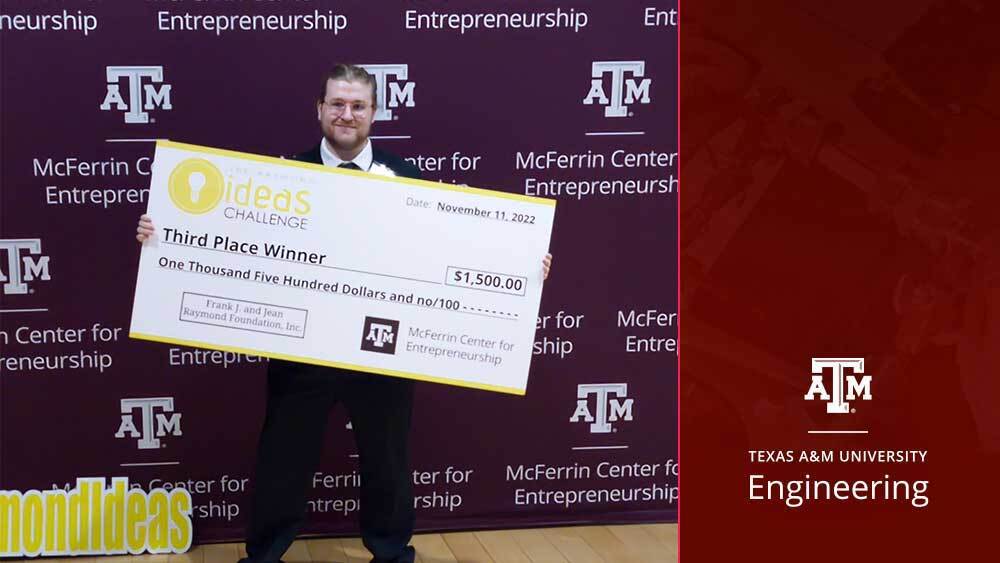
Sophomore nuclear engineering student Dillon Caldwell placed third in the 2022 Raymond Ideas Challenge hosted by the McFerrin Center for Entrepreneurship. He won $1,500 for developing an inexpensive lithium-ion battery that uses sodium, creating a more environmentally friendly option. His nuclear materials class inspired him to work to develop a chemical that would address the issues plaguing regular sodium-ion batteries with nanosheet arrays.
"I see that the battery industry is growing rapidly,” Caldwell said. "If we continue to lean only on lithium-ion batteries, we're going to run into a lot of problems in the future. So, I wanted to make an abundant, cheap and environmentally friendly alternative so things like electric vehicles can be more widely available."
Caldwell considered himself a math and chemistry person rather than a business-minded person.
"I needed programs like the Raymond Ideas Challenge and the people involved to help bring my idea to the business forefront," he said.
To participate in the competition, students submit their ideas in a pre-screening round, where a panel of judges reviews them. Then, the most promising ideas are invited to pitch in the Final Pitch Event. The top six teams earn prizes with honorable mentions.
"When competing in the Raymond Ideas Challenges, multiple judges came to me afterward and were very interested in my idea,” Caldwell said. “I may pursue one of them, but I'd like to continue working on the battery itself as it needs a few improvements, such as replacing the Cobalt for a much cheaper, environmentally better element, like magnesium."
For his project, Caldwell worked under NASA to develop a report for the competition, but this wasn't the first time he worked with the organization. At San Jacinto Community College, he participated in the NASA Community College of Aerospace Scholars, where he learned to write mission proposals.
"I didn't think I'd get in, but I applied anyway with the hope of doing something interesting over the summer," Caldwell said. "I ended up getting in, excelling in the program and loving the people they brought to tell us about NASA. Now I've participated in two similar programs along with an actual internship at the Heliophysics Division at NASA Headquarters."